How to charge a solar fence charger? And how long does it take? Can you charge it with a battery? Perhaps you need to know or are seeking the right solution. Fret not; here, I’m going to explain all the answers. The sun’s rays are captured by the solar panel and then used to charge the device’s internal battery.
Its energizer receives power from the battery and is grounded, allowing you to run a fence for up to a few weeks. We are not going to understand everything with this, right? Let’s dive in!
Solar Fence Charger: What Is It?
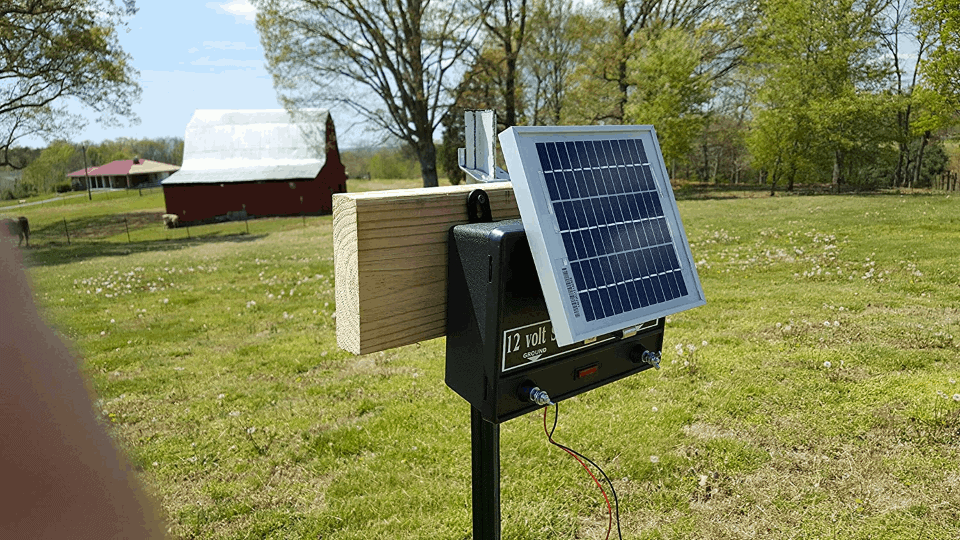
Source: ecotality.com
Have the deer completely decimated a garden you planted this year that initially seemed great? If you’re considering buying a goat, you may wonder how to keep it from escaping. It might be time to begin planning for a solar-powered electric fence. Solar fence chargers are a reliable and space-saving solution to get the energy you need.
You can use it on your farm, in the yard, or anywhere else in the sun. Use a solar-powered, grid-independent electric fence to keep predators and trespassers out of your yard. Your electric fence around your property can be upgraded to an entirely new level by installing a solar barrier charger.
A solar-powered fence charger is an electrical fence that can be charged using solar energy. The energy gathered from the sun is converted into electricity by a photovoltaic panel and then preserved in a rechargeable battery or capacitor. This power is converted into alternating current (AC) at high voltage for use on the solar-powered electric fence.
You may expect to find all of the typical components that make up a solar power system in the solar fence charger.
They are as follows:
- PV (Photovoltaic) Panel to soak up the sun’s rays and produce electrical power.
- Charge controller for voltage regulation.
- A battery that can store an excess of electric power so that it may be used even when there is no direct sunshine.
Solar Fence Charger Types
The best solar fence charger for your needs will depend on the specifications you provide. Think about the purpose of the fence. Also, ask yourself:
- How long do you want it to last?
- How big is your property?
- What kinds of animals will be there?
- If any, will this fence contain?
- In what ways does the landscape present itself?
- Is there a grounding system for public utilities in the area?
There are typically two voltage options available:
- 6 volts
- 12 volts
The 6-volt variants are ideal for temporary meadows for grazing livestock or as insect barriers for your yard and may be used on properties of a modest to moderate size.When dealing with bigger animals (like deer or bears) or when the electric fence’s length exceeds what the 6-volt type can manage, upgrading to the 12-volt type is recommended.
There is also a 4-volt version for use in very low-power scenarios.
Why Need A Solar Fence Charger?
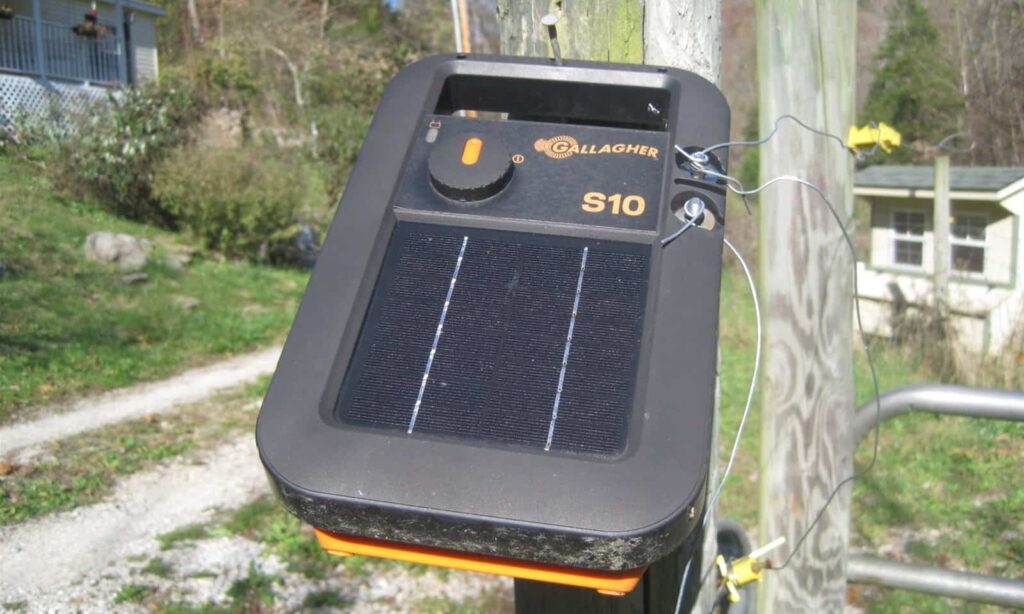
Source: literoflightusa.org
Domesticated animals and cattle alike benefit from electric fencing for containment purposes. Cattle and other animals that touch an electric fence will get a little jolt, keeping them within the fence’s confines.It is equally important to prevent wild dogs and foxes from entering your farm for the sake of your farm’s livestock.
Since AC outlets are seldom nearby, powering the electric fence may be a hassle. Keep in mind that moving AC cables to connect the fence with the charger might be a major hassle, both in terms of reliability and cost.
Therefore, it is necessary to have solar fence chargers installed to maintain the electrical fences charged. As the chargers are powered by sunlight, the electrical fence will always remain connected to power.
In a similar vein, it is possible to save expenses by eliminating the setting up of AC cable over meadows.
How To Charge A Solar Fence Charger?
Chargers for solar fences function similarly to their conventionally powered counterparts. A startling electrical shock is produced in either a person or an animal that comes into contact with the metal. This shock is then passed on via the fence.
The shock isn’t harmful, yet it is unpleasant and shocking. However, the charging process is different for all chargers.
You Will Be Needing Three Major Components:
- A fence charger
- A battery
- A solar panel
Generally, The Steps Go Like This:
- A solar charger incorporates a solar panel into its design. There are photovoltaic cells arranged in a grid form this solar panel. It goes by the name “solar collector”.
- The solar collector absorbs light from the sun.
- This collected solar energy is then transformed into electricity,
- The electricity is utilized to fuel the fence charger’s rechargeable battery.
- Of course, the battery will provide the charge to the fence.
- Every second, the Energizer, which is connected to the earth, shoots a pulse of electricity along the fence.
When an animal makes contact with the fence, the electrical link connecting the barrier and the ground beneath it is completed. As a result, the animal gets a shock that is brief and severe but not harmful.The panel’s functionality may be hindered by haze, precipitation, snow, feces from birds, and dust. However, its battery-saved energy is normally sufficient for dealing with these difficulties.
The fence must be maintained clean of clutter so the Energizer can recharge the wires efficiently.Solar Energizers have several features, but one of the most fundamental is a flickering LED light. The flickering light indicates the device is functioning correctly every time it provides a pulse of power.
Few Important Tips To Set Up A Solar Charger.
- Make sure that when you attach your solar panel
- Make sure that your fuse in the bottom is screwed into place
- Put the toggle switch into the charge position
- Let it sit for three days
How long will a solar electric fence charger last?
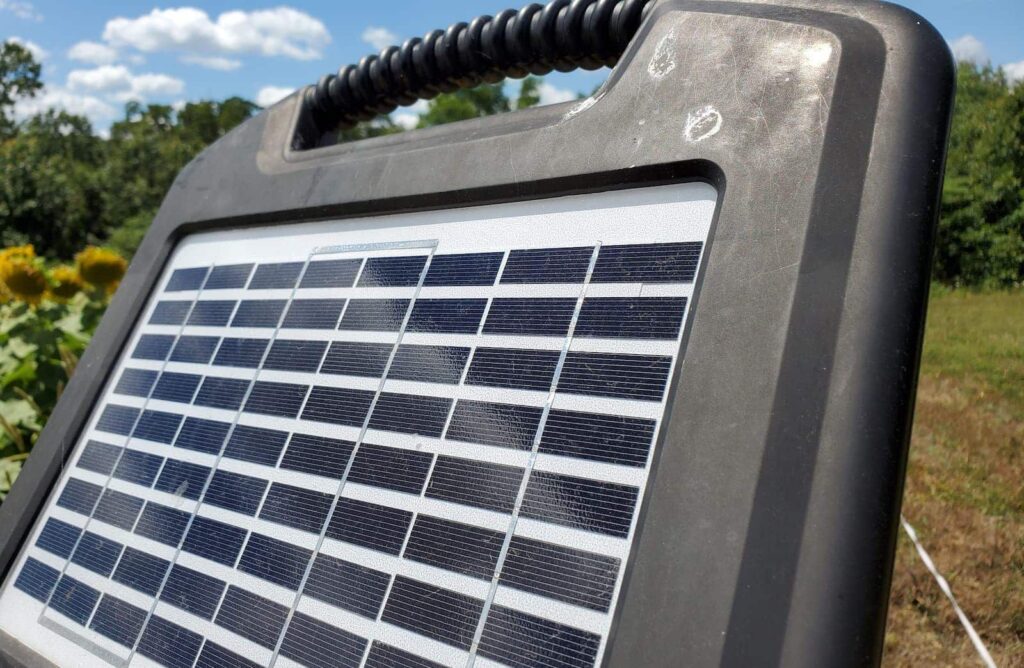
Source: todayshomeowner.com
Battery-operated fences provide the same degree of flexibility, but battery life is an issue. How long can the battery keep the fence running, and how does a poor battery affect the fence’s power? When solar panels are used to power a fence, you won’t have to worry about these issues. A well-constructed solar charger may keep an energized fence operational for as long as three weeks on a single charge. Then, you may connect to a backup battery supply or a trickle-charging device for added security or convenience when the weather turns bad.
With such adaptability, you may use solar-powered fences even when the weather is terrible without endangering your cattle.Lastly, and most critically, for those concerned primarily with financial outcomes. Solar fence chargers might have a greater out-of-pocket expense. However, their long-term cost savings from not requiring an electrical connection will more than makeup for it. The solar panel charges the battery as it absorbs sunlight.
The lead acid batteries used in solar energy fence chargers have an average lifespan of three years or one thousand days of charging time. In comparison to changing a whole charger every few years, this option is still preferable.
Advantages
- It gives you the option to place the barrier anywhere you see fit.
- They can be easily relocated to a new location, making them perfect for short-term fences.
- Solar-powered electric fences are suitable for the planet. It eliminates the need for fossil fuels while reducing energy waste.
- A solar barrier charger is an excellent investment for those who prefer not to connect to the power grid.
- It is not easy to keep the lights on in many rural and urban places. Your solar fence charger may maintain your fence operational even when the power goes out.
- The cost of extending power lines to remote areas of some farms is just too high for most people to justify. The solar fence is an economical way to enclose a property completely.
- Solar fence energizers may operate for several days without sunshine if their batteries are fully charged.
- Although they have a larger outlay, they save utility bills in the long run since they operate independently of the grid.
Disadvantages
- They have a greater outlay of capital, to begin with.
- They are sensitive to changes in the climate and are also affected by solar energy.
- Long-distance fence powering is not possible with this method.
- They are less potent than standard electric fence chargers.
What Features To Look For In A Solar Fence Charger
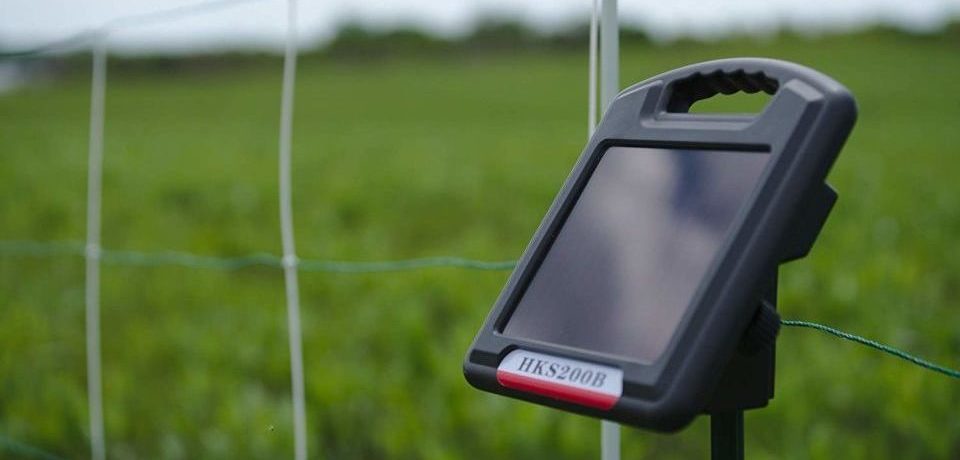
Source: ecotality.com
Always Go For A Low-Impedance Model.
The charger’s output is sufficient to overcome any resistance introduced by the growth of plants and grass along the conductor or wire. Even while it’s ideal to maintain the fence clean of plants, this function will keep things running smoothly even if that isn’t possible.
A U/L or CSA Listing Is Also Essential
Due to their potentially lethal nature, electric fences are heavily controlled by organizations like U/L (Underwriters Laboratories) in the USA and the Canadian Standards Association or CSA up north.
Any charger under the approved list, you know it has:
- stood the test of time
- been inspected
- manufactured to the highest standards in the business.
You’ll find models available without the certification by either the U/L or the CSA. Having them installed on your land poses a significant danger to you as well, your loved ones, your animals, and the surrounding area.
Efficiency Meter
Some models of solar fence chargers have an efficiency meter to display the charger’s status. If your fence suddenly stops working, you may diagnose the issue by checking the meter. Before doing any test with the performance display, be sure to consult the manual provided by the system’s manufacturer.
Weather-proofed Battery
Your system’s battery should be weather-proofed and able to withstand extreme temperatures. One of the most desirable features is a gel cell battery. Moreover, your solar fence charger’s steel casing should be rustproof and covered by a service plan in case of damage.
Maintaining Tips
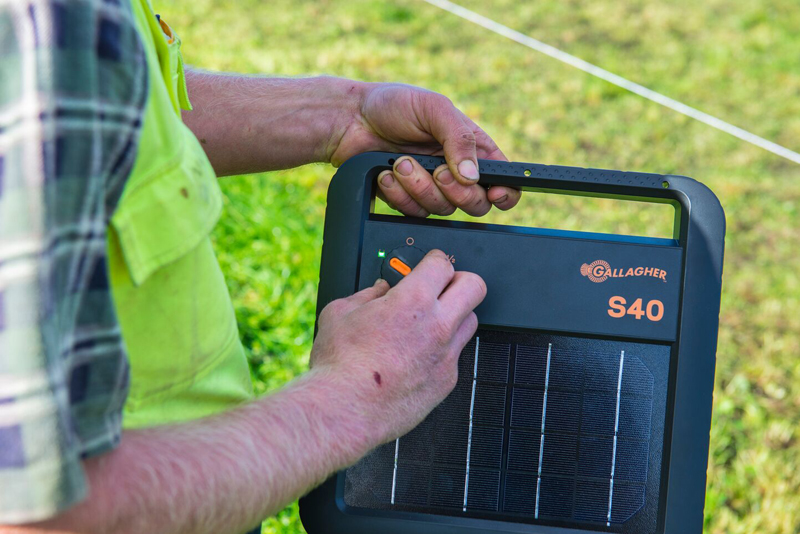
Source: am.gallagher.com
Shorter days and less intense sunshine are other hallmarks of the season change to winter. This necessitates that you maintain the optimal performance of the solar panels powering the fence chargers.
- Solar panels should be cleaned on a regular basis. If you do this, more power will be transmitted to the batteries from the charger.
- Take a moist cloth and scrape the panels to get rid of leaves, dust, grit, and other buildups.
- The control panel may be cleaned with a dry or moist cloth. If your panel is filthy, you can also try windshield or glass cleaner.
- Avoid using anything abrasive, like a Brillo pad, a scorpion, or bleach, for cleaning the solar panels.
- You might also consider purchasing an additional battery pack for the fence charger. A second pair may be charged with an AC converter in the barn while the first is left in the fence. Change the batteries once a week.
FAQs
How Long Does It Take To Charge Battery In Solar Fence Charger?
A solar fence charger is an incredible way to power your electric barrier without using any fossil fuels. Most solar fence chargers will charge a battery in about 6 hours, although this varies with the battery capacity and the quantity of accessible sunshine.
What Is The Range Of A Single Solar Fence Charger?
Based on the fence charger capacity and any unusual conditions, like weeds, that may limit its efficiency, a single solar barrier charger may span anywhere from half a mile to fifteen miles.
Is It Necessary To Turn On The Solar Fence Charger To Charge Them?
In most cases, solar fence chargers may be used in a completely off-the-grid manner. The rechargeable battery will charge throughout the day with sunlight and then provide electricity for the fence during the night or on overcast days.
Can We Use Two Fence Chargers With A Single Fence?
As long as the fence chargers are far from one another, two may be installed on the same fence. Your fence’s charging efficiency will decrease as the distance between your two chargers increases.
Recap
Hopefully, you have got your answer on how to charge a solar fence charger. The solar-powered fence charger comes equipped with a battery to work both day and night and in the absence of the sun. If you are looking for low operating expense, safety, and reliability, installing a solar-powered fence charger is a great option.



